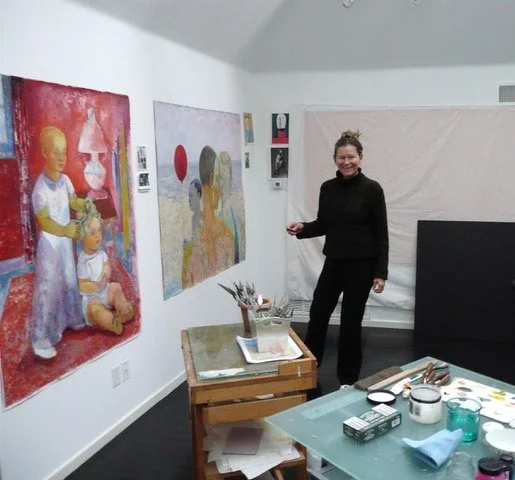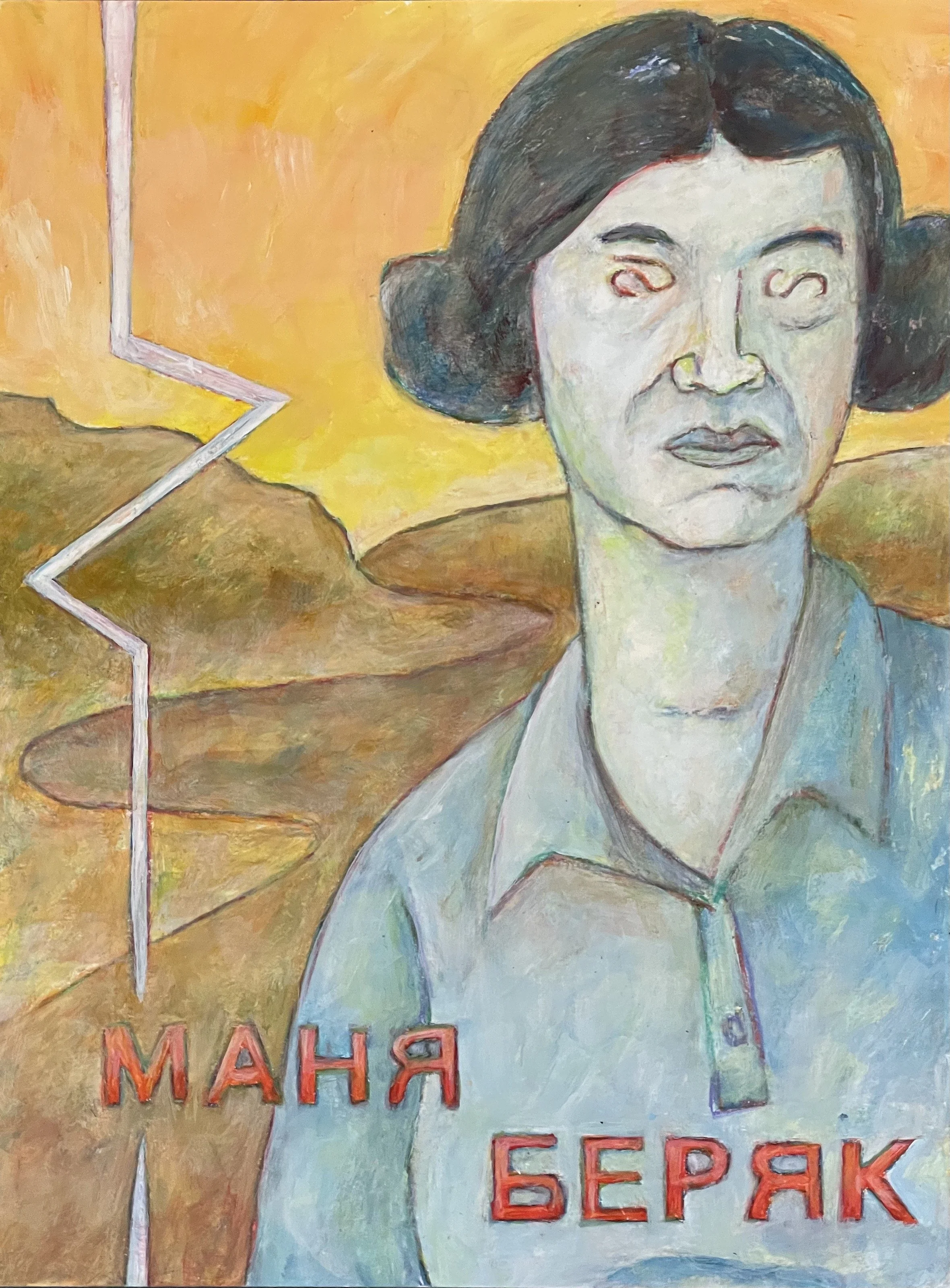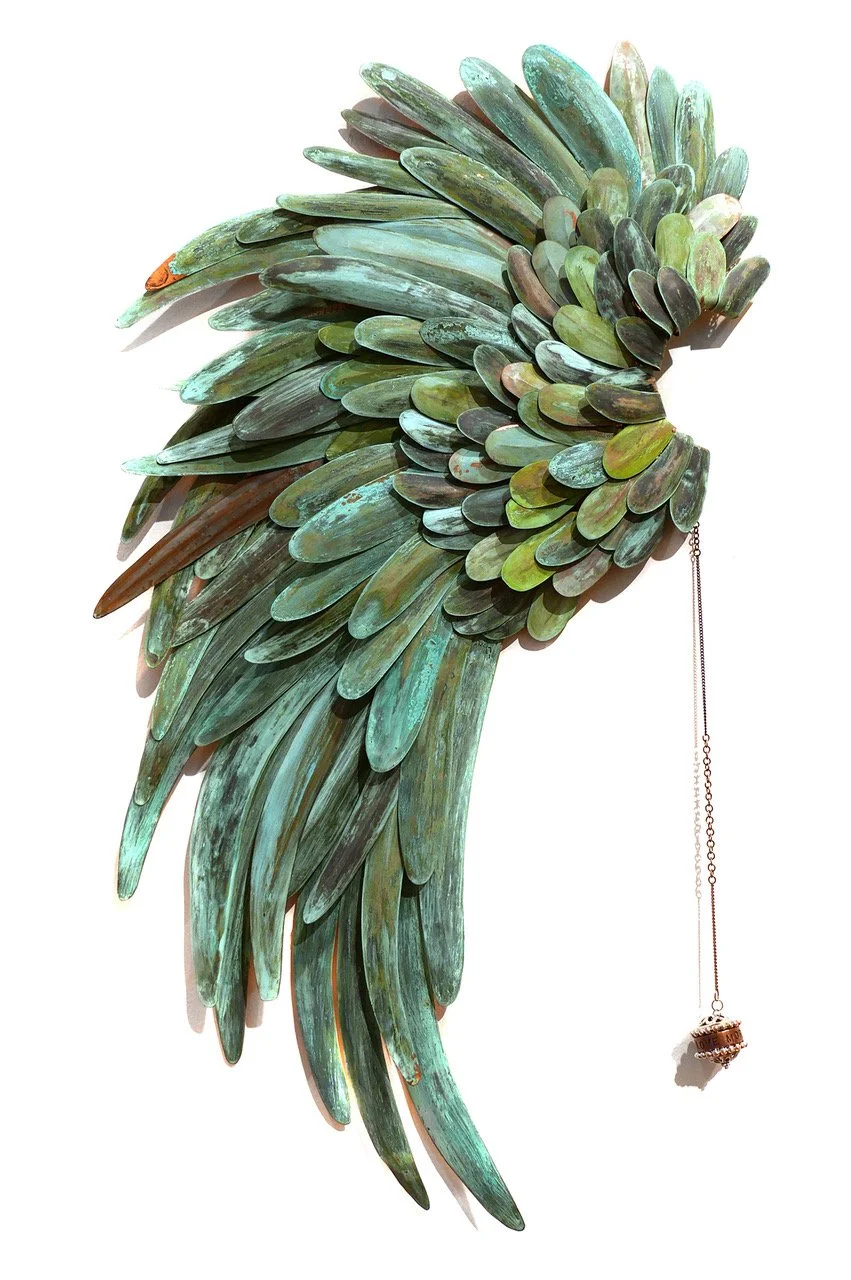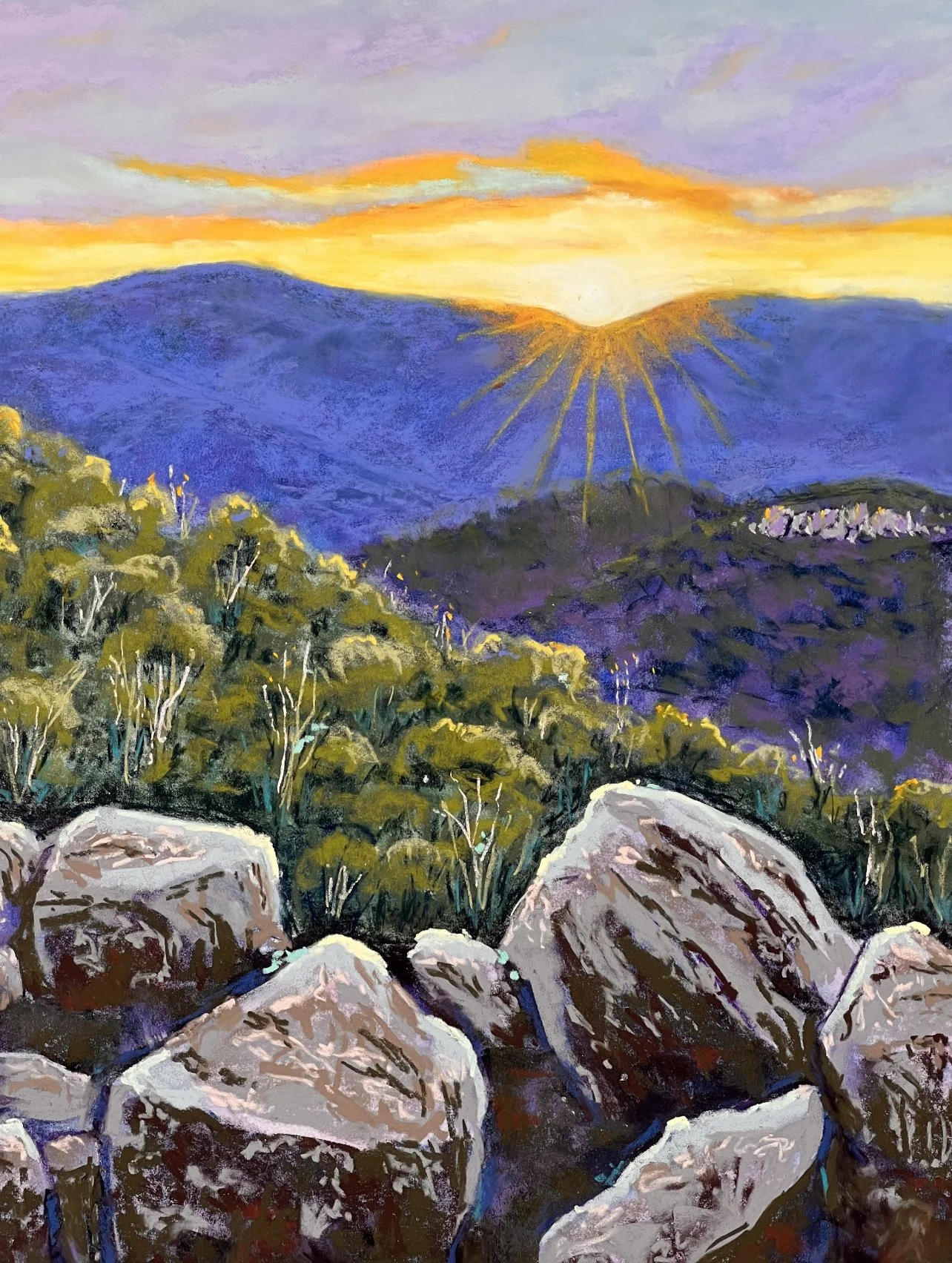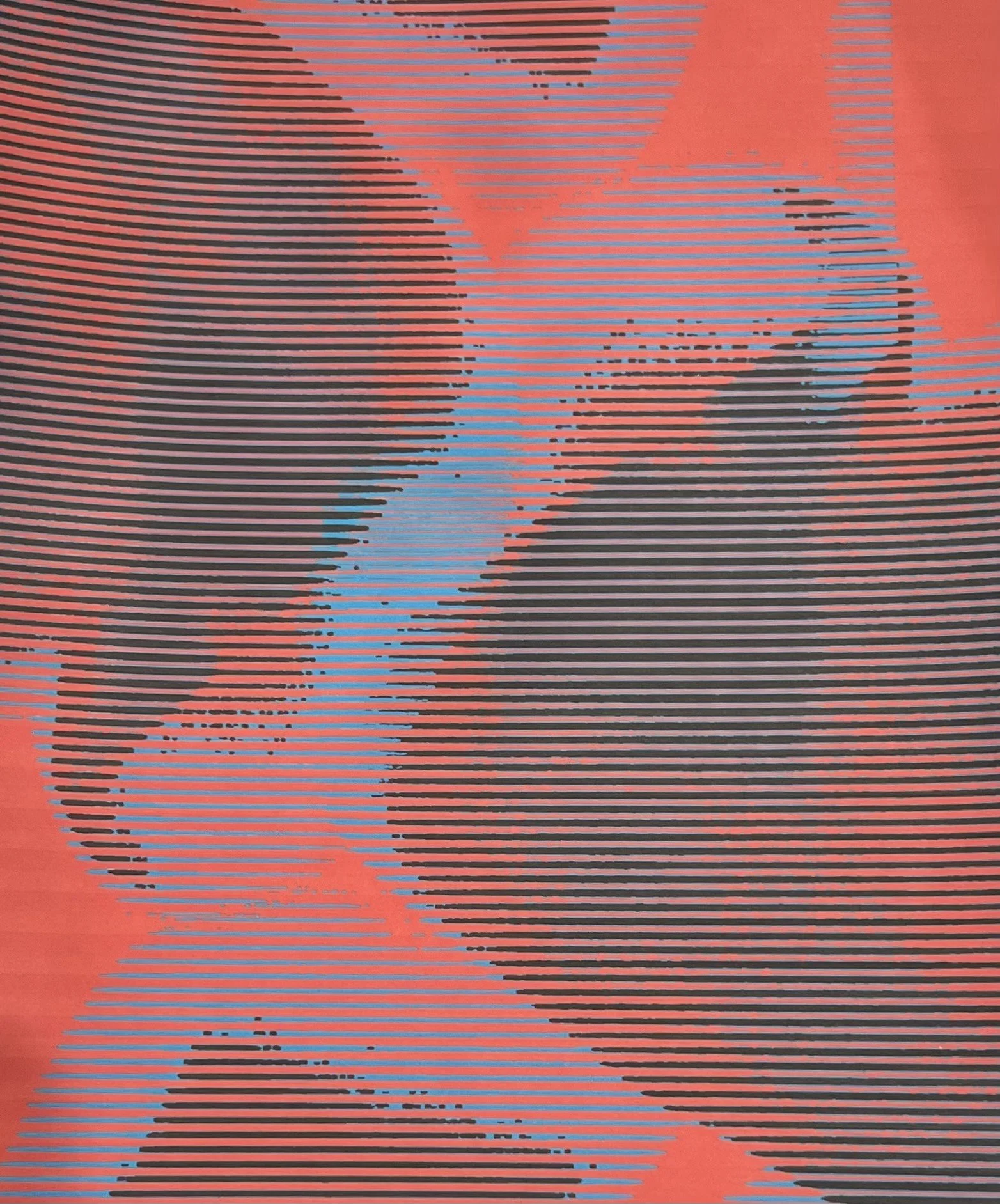Ted Barr's latest art series, RECO - Revealment & Concealment, is an extraordinary exploration of the intricate dance between what is seen and what remains hidden. In this captivating collection, Barr takes us on a profound journey, challenging our perceptions of reality and inviting us to consider the layers of experience, emotion, and memory that shape our individual understanding of the world around us.
All in Contemporary Art
Sannie Guo
Sannie Guo's collection presents a harmonious blend of minimalism and impressionistic touches that resonate with the viewer through their simplicity and understated complexity. Each painting, with its serene expanse of color at the top, subtly gradates into a field of textural brushstrokes, suggesting a landscape abstracted to its emotional essence rather than its physical form.
Interview with Olivia-Patricia Terrell O'Neal
‘STYLE’ in my art is not my objective, each piece is an adventure in both process and substance, the technique is developed according to a need for expressing an inspiration, developing the means to create visually an inner feeling, or thought. I am inspired by a belief in the healing spirit of art.
Interview with Pu Wei
The Paintbrush artist Pu Wei, a native of Kunming, Yunnan, China, is well-known as an “innovative color of Surupa painting” artist in China. She was reported in Chinese influential art webs, magazines and newspapers, TV, and CNC world news, and participated in international art exhibitions in New York, London, Paris, Strasbourg, Miami, San Diego, Dubai, Tokyo, Italy, Spain, Portugal, Switzerland, etc. and won many international art awards.
Interview with Jeff Kaufman
What were the biggest challenges you faced when you first started out as an artist in NYC and LA, especially coming from a family with no background in art, theatre, film, or politics?
My biggest challenge was my own ignorance. There was a lot I needed to learn about the world, and about myself. Growing up, I had a passion for politics, art, and classic movies, but I struggled in school and didn’t know what to do with those interests. I think for every artist it’s vital to see a path that connects where you are to where you want to be. That can come from knowing art history (personal stories, not just chronology), exploring the contemporary art world, and being part of a community.
Interview with Miro Frei
Miro Frei was born 1974 in the small town Aarau in Switzerland where he also grew up. He studied history, geography and German studies at the University of Zurich. He had been working as an artist since 2004. In 2007 he exhibited his paintings at the Kraftwerk gallery in Berlin. In 2009 he was asked to participate in the Florence Biennale. Frei’s installation „Dada is growing up” in 2014 at the artclub in Cologne received a lot of attention. Also in 2014, he exhibited his paintings in a show of the art scene Berlin at the Petrus Church in Berlin Lichterfelde. After the Florence Biennale 2013 he decided to exhibit at the Artifact gallery in Lower East Side. In January 2022 he exhibited at the Kunsthalle Bern. In 2023, he graduated from the F+F School of Art and Design with a degree in art. Further expositions in Berlin, Innsbruck, Zurich and near Zurich.
Interview with Dina Torrans
Dina Torrans has been working as a multimedia artist for over 25 years. Her award-winning artwork has been exhibited in numerous solo and group exhibitions internationally and is included in many private and public collections. After graduating with awards from The Art Centre at Central Technical School in Toronto, she worked as an instructor in both the Sculpture and Printmaking Departments for over 10 years. She has been a Visiting Artist and Speaker at, among others, the McMichael Gallery, York University - School of the Arts and The Toronto Board of Education.
Interview with Ynoxe Graffiti
You have experimented with canvas painting, sculpture, and other mediums alongside graffiti. How do these different art forms influence your approach to graffiti, and vice versa?
Canvas painting has the virtue of taking me out of my comfort zone. I quickly believed that painting on canvas was like a scaled-down wall... one needs to take the time to understand the preparation processes, and all of this was new. I am currently preparing for an international contemporary art exhibition for Art Shopping in Biarritz in collaboration with p(art)s Paris, who shapes metals and combines them with my paintings in a splendid manner. I'm looking forward to that date!
Caroline Reid
In the vibrant tableaus of Caroline Reid's artworks, one encounters the vivid essence of the semi-alpine region that she calls home. Reid's oeuvre is a celebration of the natural world, a kaleidoscopic journey through landscapes rendered with a joyous palette and an exuberant stroke. Her paintings, which she creates in the company of her three dogs during her rambles, transcend mere representation. They become an intimate chronicle of her dialogues with Mother Earth, each canvas an act of reverence and exploration.
Marco Benedetti
Marco Benedetti’s oeuvre is a testament to the intricate dance between mediums, a symphony of traditional photography and diverse artistic methods that culminates in a rich tapestry of mixed media art. His works are a deep reflection of historical richness blended with modern-day relevance, bridging the gap between epochs with a nuanced understanding of form, emotion, and texture.
Armando Cabba
Armando Cabba’s artistry is a captivating journey through the intricate dance of portraiture and abstraction. His canvases are realms where the visceral and the ethereal coalesce, presenting a duality that is both profound and accessible. Known predominantly for his portraits, Cabba's works are more than mere representations; they are emotional landscapes painted with the vibrant palette of human experience.
Elena Dobrovolskaya
In the realm of contemporary art, where abstraction and conceptual motifs often dominate, the works of Elena Dobrovolskaya emerge as a refreshing homage to realism. Her oeuvre, a delightful collection of paintings and drawings, revels in the beauty of the tangible world, capturing the essence of everyday objects and people with an almost poetic grace. This review delves into the heart of Dobrovolskaya's artistry, exploring the nuances that make her work not only aesthetically pleasing but also profoundly significant in today's art landscape.
Interview with Dorothea Elisabeth Piper
The German artist Dorothea Elisabeth Piper, also known under her artist name ELIA, has been living and working south of Berlin since 1980. Since 1956, she spent her childhood in Lutherstadt Wittenberg, an old historical city known for its rich traditions, and studied pedagogy in Potsdam. After another degree in accounting and controlling, and the birth of three wonderful children, she devoted herself completely to art. In 2002 she opened her workshop ELIA in Ludwigsfelde. She loves to share her passion for painting and teaching during classes in her own painting school, in her workshop, and as an independent painting tutor. She supports the Volkshochschule Teltow-Fläming and the Akademie 2. Lebenshälfte on a voluntary basis and practices art with seniors.
Robert Ram
Robert Ram's artworks invite spectators into a realm where the boundaries of surrealism and magical realism intertwine, resulting in a mesmerizing tapestry of the extraordinary. Every artwork presented here acts as a gateway, inviting the viewer to step into a meticulously constructed realm that surpasses the ordinary. It demands the suspension of disbelief, urging one to fully embrace a world where the implausible and the unimaginable seamlessly intertwine in perfect unity.
Interview with Asli Dogru
We are delighted to present an exclusive interview with the talented and versatile artist, Asli Dogru. Hailing from Istanbul, Asli's artistic journey has been nothing short of inspiring. Her passion for creativity and artistic expression has led her to explore various mediums, including painting, printmaking, photography, ceramics, graphic design, and web design.
Interview with Ursa Schoepper
What sparked your interest in science and how has that background influenced your approach to photography and art?
There are various aspects that artistically motivated me to choose photography. I grew up as a curious little girl in a beautiful landscape, near the Eggegebirge. My parents made me aware of the beauty of nature and my mother shared her passion for art with me. That's why I first studied biology. I was amazed at how beautiful the internal anatomy of a leaf, for example, looked. The cellular structure was real and at the same time reminiscent of abstract paintings. As a student, I had to draw these structures that I saw in the microscope. It became more helpful if they could be photographed.
Interview with Luciana Abait
Luciana Abait was born in Buenos Aires, Argentina and is currently based in Los Angeles. Her multimedia works deal with climate change and environmental fragility, and their impacts on immigration in particular.
Interview with Lusie Schellenberg
Who are some of the artists, past or present, who have influenced your work the most, and how do you hope your work will influence future artists?
Leonardo da Vinci is certainly one of the greatest artists of all time. His masterpieces, such as The Mona Lisa and The Last Supper, impress with their technical mastering idealism and anticipate many modern artistic trends. In my work, I will try to create unique works that will evoke emotions and imagination in people. I hope that my work will inspire future artists to experiment and create their own original art. Influencing other artists is a privilege, most of it, but it's a matter of time and does not depend on the wishes of the artist.)))
Interview with Marta Prominska
How did you develop the philosophy behind your hypnagogic art, and why do you find this concept so compelling?
Hypnagogic art is that which comes from the world in the corner of the eye, on the border between dream and reality, somewhere in between, in the truest and closest reality to ourselves. It is the delusion or truth, the line between consciousness and reality, the area where our subconscious begins to operate. Hypnagogic art, then, is that which touches our emotions truly without linking them to us common.
Interview with Alessandra Dieffe
Your thesis in History and Criticism of Cinema suggests a deep connection with film from early on. How has your academic background in Sociology and Cinema influenced your approach to digital art?
Digital art is a contemporary art form that immediately fascinated me. With time I increased the knowledge of this artistic form and I chose to represent my academic background and everything that has stratified over the years, during my personal learning path. This choice happened spontaneously and naturally.



